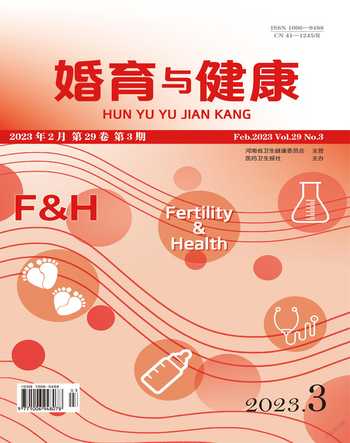耳鼻喉科手术患者术前焦虑现状及影响因素分析
薛小霞 刘娇阳
【摘要】目的:了解耳鼻喉科患者术前焦虑现状,分析其影响因素。方法:采用一般资料调查问卷、状态-特质焦虑问卷对西安市某医院需手术的228例耳鼻咽喉科患者焦虑情况进行横断面调查。结果:228例耳鼻咽喉科手术患者状态焦虑得分为(44.02±9.92)分,特质焦虑得分为(42.71±9.21)分;多元逐步线性回归结果显示,性别、职业是焦虑主要影响因素(P<0.05)。结论:耳鼻咽喉科患者术前状态焦虑水平较高,对于有高特质焦虑倾向的人群加强关注预防;耳鼻咽喉科护士应对手术患者不同人群制定个性化干预,重视对女性、农民人群的關注。
【关键词】耳鼻咽喉科;状态焦虑;特质焦虑;影响因素
Analysis of preoperative anxiety status and influencing factors of patients undergoing otorhinolaryngology surgery
XUE Xiaoxia, LIU Jiaoyang
The Second Affiliated Hospital of PLA Air Force Military Medical University, Xian, Shaanxi 710038, China
【Abstract】Objective:To investigate the preoperative anxiety status of patients in otorhinolaryngology department and analyze its influencing factors.Methods:A cross-sectional survey of 228 patients in otorhinolaryngology department who needed operation in a hospital in Xian city was conducted with general data questionnaire and state-trait anxiety questionnaire.Results:The scores of state anxiety and trait anxiety were(44.02±9.92)points and(42.71±9.21)points in 228 patients undergoing otorhinolaryngology surgery;The results of multiple stepwise linear regression showed that gender and occupation were the main influencing factors of anxiety(P<0.05). Conclusion:The preoperative state anxiety level of otorhinolaryngology patients is higher,and more attention should be paid to the prevention of patients with high trait anxiety tendency;Otorhinolaryngology nurses should formulate personalized intervention for different groups of surgical patients,and pay attention to women and farmers.
【Key?Words】Otorhinolaryngology; State anxiety; Trait anxiety; Factors affecting
手术治疗作为耳鼻咽喉外科患者最常见的治疗方法之一,患者手术部位多为头面部疾病,手术部位虽然不大,但是患者感觉器官丰富,敏感性强,加之疾病容易反复,患者容易出现生理、心理方面的问题,可能导致患者焦虑[1];而焦虑作为耳鼻咽喉科患者最常见的术前心理问题,严重影响其手术的顺利进行与术后的康复、生活质量等[2]。因此,本研究通过对耳鼻咽喉科患者术前焦虑水平进行横断面调查,为进一步的护理干预提供临床依据。
1 对象与方法
1.1 研究对象
选取2021年2月—2021年6月某三甲医院耳鼻咽喉科228例手术患者为研究对象。纳入标准:①在某三甲医院耳鼻咽喉科住院的择期手术患者;②年龄≥18周岁,神志清楚,能有效沟通,配合完成问卷填写;③签署知情同意书,自愿参加。排除标准:①有精神病史的患者;②手术暂停患者;③不愿参加本次调查者。
1.2 研究方法
1.2.1 调查工具:(1)一般问卷自行设计的一般情况调查表,内容包括性别、年龄、文化程度、职业、手术部位。(2)状态-特质焦虑问卷由Spielberger于1977年编制的一种自我评价问卷,此量表T-AI内部一致性信度为0.8825,S-AI为0.9062[3]。状态-特质焦虑问卷(STAI)共40个项目,特质焦虑量表(T-AI)描述人们较稳定的焦虑状况,状态焦虑量表(S-AI)描述一种不愉快的情绪体验;本研究37分以上为阳性,得分越高焦虑水平越高。
1.2.2 资料收集方法征得所有研究对象的知情同意。共发放问卷250份,有效问卷228份。
1.3 统计学方法
采用SPSS 23.0统计学软件进行数据分析。计数资料采用(%)表示,进行x2检验,计量资料采用(χ±s)表示,进行t检验,P<0.05为差异具有统计学意义。


